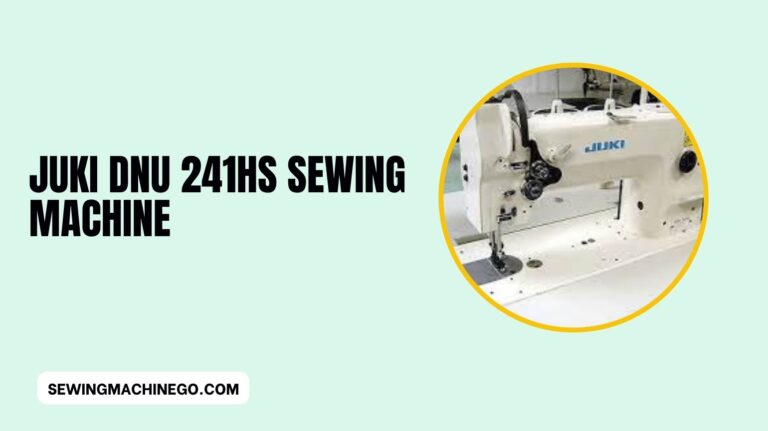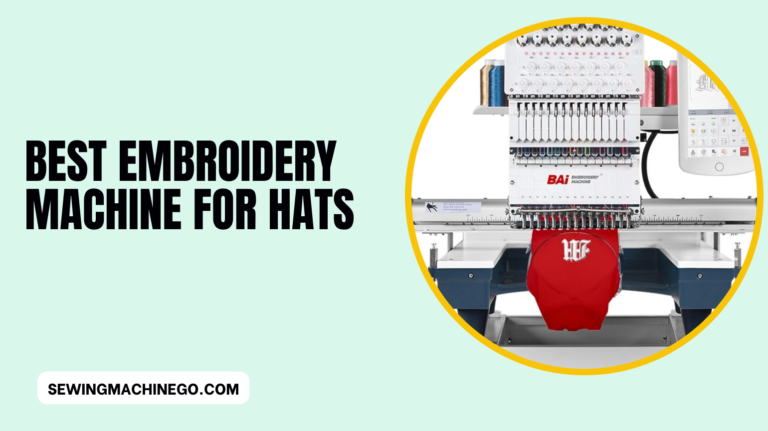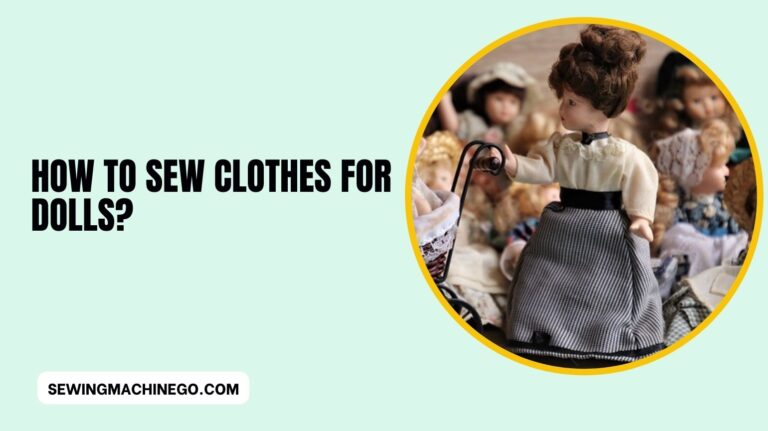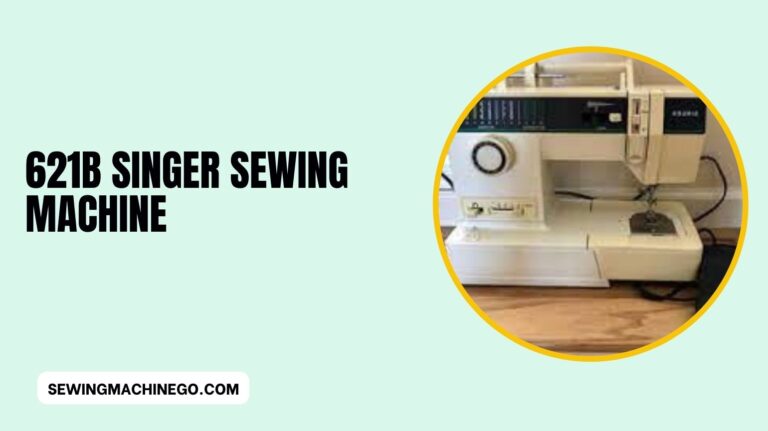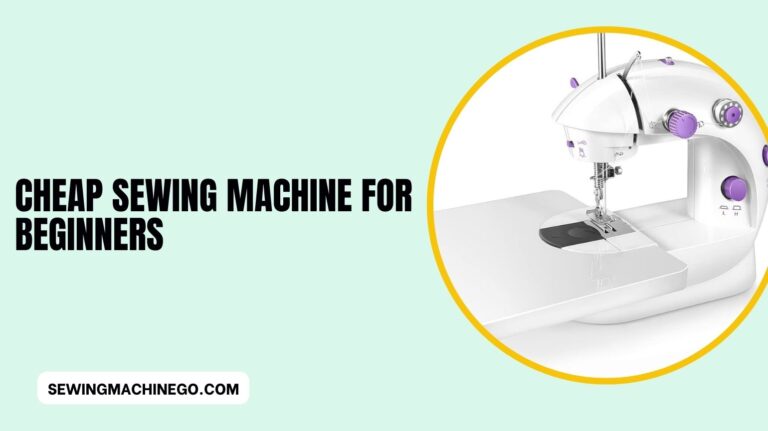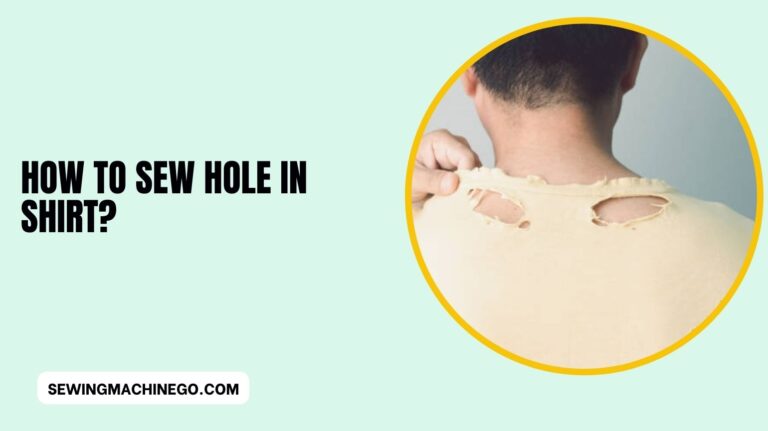How Sewing Machine Works? Easy And Simple Steps Of 2023
How Sewing Machine Works? Understanding the inner workings of a sewing machine unveils the magic behind every stitch.
These ingenious devices, a fusion of precision engineering and creativity, transform fabric into artistry with each pass of the needle.
Delving into how a sewing machine operates reveals a symphony of mechanisms, from bobbins and needles to tension discs and feed dogs, all synchronized to weave threads into intricate patterns.
In this exploration, we’ll unravel the mechanics behind this indispensable tool, shedding light on the fascinating process that brings your sewing projects to life.

How Sewing Machine Works?
A sewing machine operates through a complex yet synchronized system of mechanisms designed to join fabrics together using thread. The basic components and functions of a sewing machine include:
- Needle and Thread: The needle pierces the fabric, creating a hole, and the upper thread passes through it. The bobbin, holding the lower thread, interlocks with the upper thread to form stitches.
- Feed Dogs: These are metal teeth beneath the needle that move the fabric forward and backward under the needle during sewing.
- Tension Mechanism: It regulates the tension of the upper thread, ensuring even stitches by controlling the thread’s tautness.
- Bobbin and Bobbin Case: The bobbin holds the lower thread, and the bobbin case ensures the thread feeds properly while sewing.
- Presser Foot: This holds the fabric in place while allowing it to move smoothly under the needle.
- Balance Wheel: This manually operates the machine, controlling the needle’s up and down motion.
- Stitch Regulator: Determines the length and style of the stitches.
As the machine is powered, the needle moves up and down, drawing the upper thread through the fabric.
Simultaneously, the feed dogs move the fabric along, allowing stitches to form. The tension between the upper and lower threads creates secure and consistent stitching.
Different sewing machines, from mechanical to computerized models, incorporate variations and additional features for various sewing techniques like quilting, embroidery, and specialty stitches.
Understanding these mechanisms empowers users to create precise and beautiful stitches while operating the machine effectively.
Key Components of a Sewing Machine
At its core, a sewing machine is a combination of intricate components. The needle and thread, bobbin and shuttle, and the feed dog mechanism work harmoniously to create precise stitches.
a sewing machine may seem complex, but it operates on a few key components that work together to create stitches:
- Needle: The needle is the primary tool that pierces the fabric. It moves up and down rapidly, creating a hole for the thread to pass through.
- Thread Spool: This is where the thread is wound. The spool holds the thread and releases it in a controlled manner as the machine sews.
- Bobbin: The bobbin holds the lower thread. It sits underneath the needle plate and works in conjunction with the upper thread to form stitches.
- Feed Dogs: These are metal teeth-like ridges that sit below the needle. They move the fabric through the machine in a controlled manner, allowing for even stitching.
- Tension Discs: These regulate the tension of the thread. Proper tension ensures that the stitches are neither too loose nor too tight.
- Presser Foot: This component holds the fabric in place while stitching and can be adjusted to accommodate different fabric thicknesses.
- Stitch Selector and Controls: Modern sewing machines often come with various stitch options. These controls allow you to select the type of stitch and adjust settings like stitch length and width.
- Motor and Belt: These provide the power to run the machine. The motor drives the needle and other moving parts via a belt or gears.
The basic principle involves the needle and the bobbin thread interlocking within the fabric layers to create stitches.
The machine uses a combination of these components to control the timing, tension, and movement required for sewing various types of stitches on different fabrics.
Types of Sewing Machines
There are various types of sewing machines, each catering to different needs.
Mechanical sewing machines offer simplicity, electronic ones provide automation, and computerized models are equipped with cutting-edge technology.
How the Needle and Thread Work Together?
The needle and thread are the heart of any sewing machine. Understanding the selection of the right thread and threading the needle correctly is essential for seamless stitching.
The Role of Bobbin and Shuttle Mechanism
The bobbin and shuttle mechanism are responsible for the lower thread in a sewing machine. Winding the bobbin and inserting it correctly are crucial steps in the setup.
Understanding the Feed Dog Mechanism
The feed dog mechanism ensures the smooth movement of fabric through the machine. Knowing how to adjust the feed dog settings allows for control over stitching patterns.
Mechanical Sewing Machines: A Closer Look
Mechanical sewing machines stand as a testament to timeless reliability and functionality in the world of sewing. With their manual operation driven by hand or foot pedals,
these machines offer a fundamental yet robust approach to stitching. Simplified in design yet adept in performance, they boast durability and ease of maintenance.
Their straightforward mechanisms—comprising basic dials, levers, and a rotary hook system—deliver consistent stitches for various fabrics.
While lacking the computerized finesse of modern counterparts, their charm lies in their mechanical simplicity, making them ideal for beginners and enthusiasts valuing a hands-on sewing experience.
Electronic Sewing Machines: Advantages and Features
Electronic sewing machines elevate the sewing experience with their blend of technology and user-friendly features.
These machines offer automated functions like preset stitch patterns, adjustable speed controls, and one-touch buttonholes, simplifying complex tasks.
Their LCD screens display stitch selections and settings, providing easy navigation. With precise tension adjustments and the ability to handle a wide range of fabrics, electronic machines ensure consistent and professional-quality stitches.
Their balance between automation and user control makes them ideal for sewers seeking versatility and efficiency in their projects.
Computerized Sewing Machines: Cutting-Edge Technology
Computerized sewing machines stand at the forefront of innovation, integrating cutting-edge technology into the art of sewing.
These machines harness the power of computerization to offer an extensive array of stitch options, intricate embroidery capabilities, and precise customization.
With digital displays, touchscreens, and programmable settings, users can effortlessly select stitches, adjust settings, and create intricate designs with ease.
Advanced features like automatic thread tension, needle positioning, and stitch elongation further streamline the sewing process.
Their versatility and ability to handle complex tasks make computerized machines a top choice for sewing enthusiasts, quilters, and embroidery aficionados seeking precision, creativity, and efficiency in their craft.
Maintenance Tips for Sewing Machines
Proper maintenance ensures the longevity of your sewing machine. Regular cleaning, lubrication, and oiling are simple yet effective ways to keep your machine in top-notch condition.
Proper maintenance is crucial for ensuring the longevity and performance of your sewing machine. Follow these quick tips to keep your machine in top condition:
- Regular Cleaning: Clean the machine after every major project to remove lint, dust, and debris.
- Lubrication and Oiling: Apply lubricant to moving parts and oil the machine according to the manufacturer’s recommendations.
- Check Needles and Bobbins: Inspect and replace needles regularly, and ensure bobbins are correctly wound and inserted.
- Thread Tension Adjustment: Regularly check and adjust thread tension to prevent stitching issues.
Troubleshooting Common Sewing Machine Issues
Encountering issues is part of the sewing process. Understanding and troubleshooting problems like thread tension issues and jammed needles can save both time and frustration.
Sewing machines, while versatile, can encounter common issues. Here’s a quick guide to addressing them:
- Uneven Thread Tension:
- Check threading for correctness.
- Adjust tension settings as needed.
- Jammed Needles:
- Inspect for a bent needle.
- Ensure proper needle installation.
- Thread Breakage:
- Use quality thread.
- Confirm correct threading and tension.
- Skipped Stitches:
- Check needle condition.
- Adjust stitch length and tension.
- Machine Won’t Start:
- Confirm power source.
- Check the foot pedal connection.
- Fabric Not Feeding:
- Clean feed dogs for debris.
- Adjust feed dog settings.
- Strange Noises:
- Oil moves parts regularly.
- Check for loose screws or debris.
Innovations in Modern Sewing Machines
Modern sewing machines come with exciting features like embroidery capabilities and quilting functions. These innovations open up new possibilities for creative expression.
Sewing Machine Accessories: Enhancing Your Craft
Sewing machine accessories are the unsung heroes that elevate your crafting experience. From essential tools like bobbins, needles, and presser feet to specialized attachments such as quilting guides, walking feet, and embroidery hoops, these accessories expand your machine’s capabilities.
Seam guides, thread stands, and specialized scissors streamline tasks, enhancing precision and efficiency.
Mastering the use of these accessories not only optimizes your sewing experience but also unlocks a world of techniques and projects, making your craft more versatile and enjoyable.
Sustainable Sewing: Eco-Friendly Practices
As we become more conscious of our environmental impact, adopting eco-friendly practices in sewing is crucial. Choosing sustainable materials and reducing fabric waste contribute to a greener crafting experience.
People also ask
How does a sewing machine work step by step?
Thread the Machine:
Place a spool of thread on the spool pin.
Guide the thread through the machine’s thread guides.
Thread the needle from front to back.
Wind the Bobbin:
Place an empty bobbin on the bobbin winder.
Pass the thread through the bobbin winding tension disc.
Start the machine to wind the bobbin.
Insert the Bobbin:
Place the wound bobbin into the bobbin case.
Guide the thread through the bobbin case slot.
Prepare the Fabric:
Place the fabric under the presser foot.
Lower the presser foot to hold the fabric in place.
Select Stitch and Adjust Settings:
Choose the desired stitch on the machine.
Adjust stitch length and width as needed.
Lower the Needle:
Turn the handwheel to lower the needle into the fabric.
Sew:
Press the foot pedal to start sewing.
Guide the fabric evenly through the machine.
Reverse Stitch (Optional):
Some machines have a reverse stitch lever for backstitching.
Finish Sewing:
Lift the presser foot when finished.
Trim excess thread and remove the fabric.
Secure the Stitch:
Use the machine’s reverse stitch function or manually backstitch at the beginning and end to secure the stitches.
How did the sewing machine work?
The sewing machine operates through a series of precise mechanisms:
Threaded Needle:
A threaded needle descends through the fabric, creating a hole for the thread.
Bobbin Interaction:
The needle thread interlocks with the bobbin thread beneath the fabric.
Feed Dog Movement:
The feed dog mechanism advances the fabric, facilitating even stitching.
Stitch Formation:
As the needle rises, it forms a complete stitch, securing the fabric layers together.
Repeat Process:
The process repeats, creating a continuous seam with consistent stitches.
Why do sewing machines have two threads?
Sewing machines utilize two threads – one from the needle and one from the bobbin – to create a secure and durable stitch.
The needle thread passes through the fabric, interlocking with the bobbin thread underneath.
This dual-thread system enhances the strength and stability of the stitches, ensuring a reliable and long-lasting seam.
The collaboration of these two threads is a fundamental aspect of the sewing machine’s functionality, contributing to the versatility and efficiency of the stitching process.
What is the movement of the sewing machine?
The sewing machine’s movement involves a combination of vertical and horizontal motions.
The needle moves up and down, piercing the fabric to create a hole in the thread.
Simultaneously, the feed dog mechanism moves the fabric horizontally, facilitating the formation of even stitches.
This coordinated vertical and horizontal movement ensures precision and consistency in the sewing process, allowing for the creation of intricate and well-defined patterns on various fabrics.
Conclusion
In conclusion, understanding how sewing machines work is the first step towards becoming a skilled sewer. Whether you prefer the simplicity of a mechanical machine or the advanced features of a computerized one,
the world of sewing offers something for everyone. So, pick up your fabric and let your creativity flow through the stitches.

Hi, I am Alice, and I am your perfect guide to the world of sewing machines. With over 10 years of experience in the sewing industry, I am passionate about sharing my knowledge and expertise to help you make the most of your sewing journey. about me

